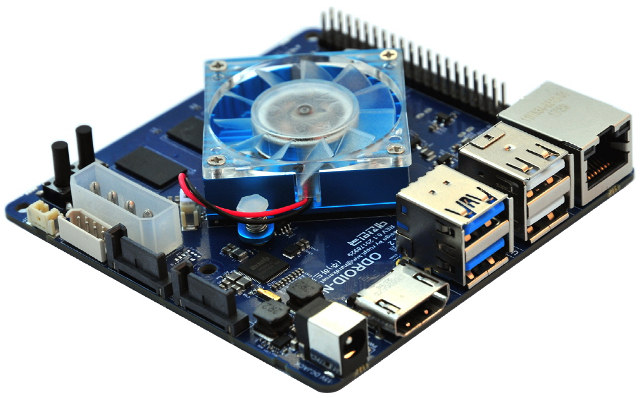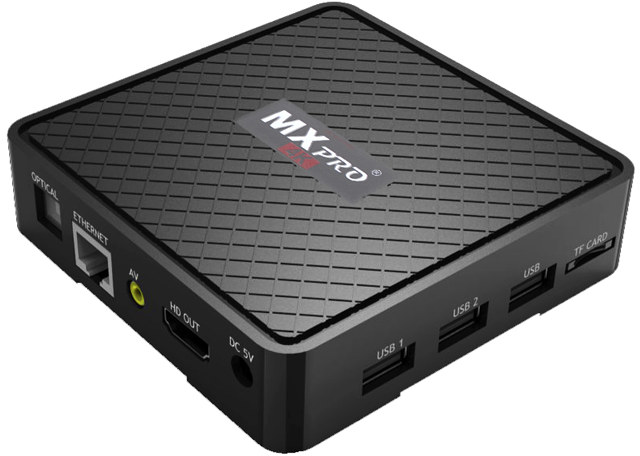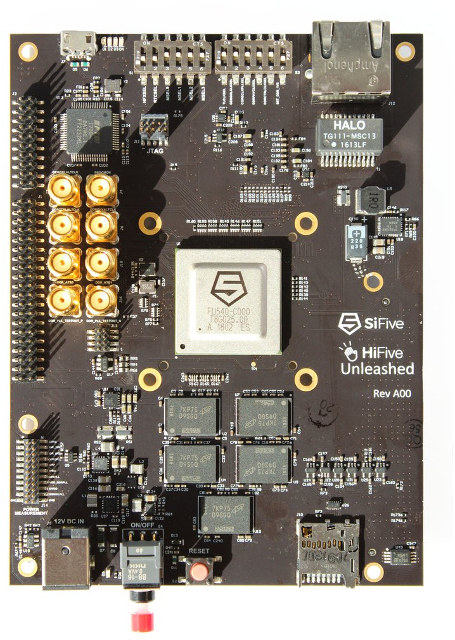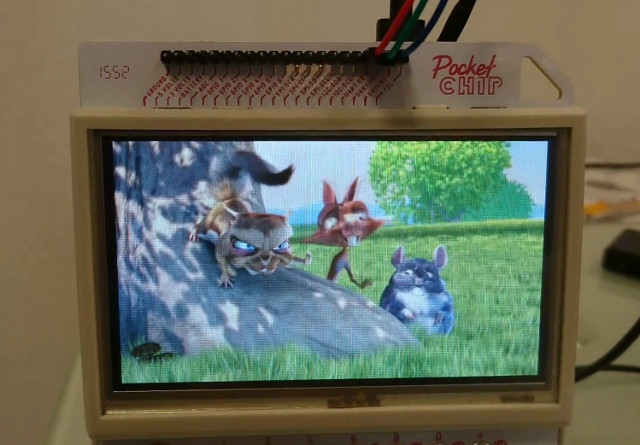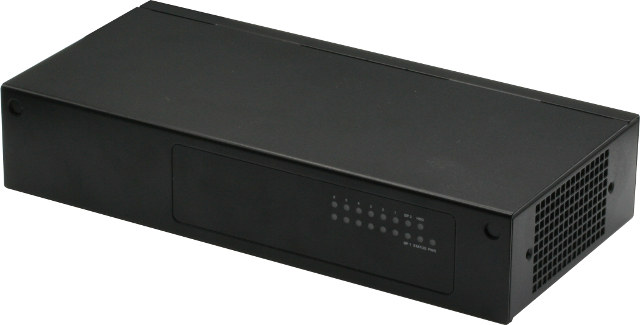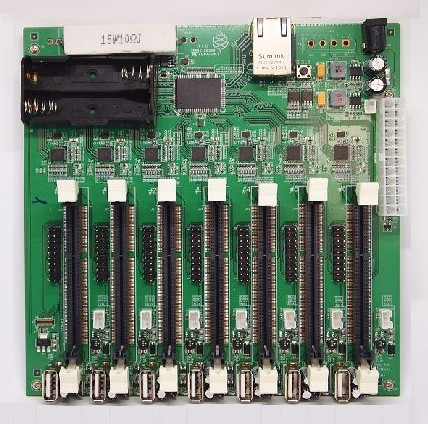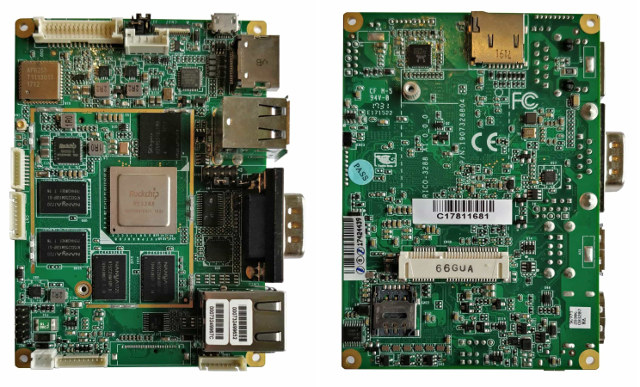It’s official, there’s a bubble of Rockchip RK3399 boards announcements or launches in early 2018. After AAEON RICO-3399, Orange Pi RK3399, and Pine64 RockPro64, which add to 96Boards compliant Rock960 announced a couple a months ago, and which may launch in Q1 2018, Hardkernel has now announced they’ve been working on ODROID-N1 board. ODROID-N1 board specifications: SoC – Rockchip RK3399 hexa-core processor with a dual-core Arm Cortex-A72 @ 2GHz, a quad-core Arm Cortex-A53 @ 1.5Ghz, and a Mali-T860MP4 GPU that supports OpenGL ES1.1/2.0/3.0, OpenCL 1.2 System Memory 4Gbyte DDR3-1866 RAM, Dual channel interface for 64bit data bus width Storage – eMMC 5.0 (HS400) flash storage, UHS capable micro-SD slot., 2x SATA3 ports using, native SATA implementation via PCIe-gen2 to SATA3 interface Video Output – HDMI 2.0 for 4K display Connectivity – Gigabit Ethernet port USB – 2x USB 3.0 host ports, 2x USB 2.0 host port. Expansion – 40-Pin GPIO […]
Vorke V1 Plus Celeron J3455 Mini PC Review with Windows and Ubuntu
Most Intel based mini PCs use processors classified as ‘Mobile’ as these have lower thermal design power (TDP) ratings which is the maximum amount of heat generated by the processor: However, the new Vorke V1 Plus has incorporated a ‘Desktop’ processor namely the Intel Celeron J3455. On paper this processor looks like it should perform similar to the Intel Pentium N4200 processor but with a tradeoff between being a cheaper processor to purchase but more expensive to run due to the increased power requirements. Geekbuying provided a Vorke V1 Plus for review so let’s start by taking a look at the physical characteristics. The device comes in a plain box and was supplied with the ‘right AC Adapter’ for my country. The first observation is that it is quite a large device. At just over 6” square (153mm) and nearly 1.5” tall (38mm) it is the biggest mini PC I’ve […]
MX Pro 4K is an Android 7.0 TV Box powered by Allwinner H5 Processor
We’ve already seen Allwinner H5 processor in several development boards such as NanoPi NEO2, Orange Pi Zero Plus, or Libre Computer Tritium 2G among other. But while the processor has been designed for 4K OTT TV boxes, I had not seen any TV box based on the processor so far. MX Pro 4K, not to be confused by MXQ Pro 4K, changes that, as it features the quad core Cortex A53 processor combined with 1GB RAM, 8GB storage, and the usual HDMI, Ethernet, USB ports you’d expect from a TV box. MX Pro 4K specifications: SoC – Allwinner H5 quad core Cortex A53 processor with hexa-core Mali-450MP4 GPU System Memory – 1 GB DDR3 Storage – 8 GB eMMC flash (options: 4GB, 16GB, 32GB), micro SD card slot Video Output – HDMI 1.4b up to 4K @ 30 Hz, AV port (composite) Audio Output – HDMI, AV (stereo audio), and […]
SiFive Introduces HiFive Unleashed RISC-V Linux Development Board (Crowdfunding)
RISC-V free and open architecture has gained traction in the last couple of years. SiFive has been one of the most active companies with RISC-V architecture, introducing Freedom U500 and E500 open source RISC-V SoCs in the summer of 2016, before launching their own HiFive1 Arduino compatible board, and later the official Arduino Cinque board. That’s fine if you are happy with MCU class boards, but RISC-V is getting into more powerful processors, and recently got initial support o Linux 4.15, so it should come as no surprise the company has now launched HiFive Unleashed, the first RISC-V-based, Linux-capable development board. HiFive Unleashed key features and specifications: SoC – SiFive Freedom U540 with 4x U54 RV64GC application cores @ up to 1.5GHz with Sv39 virtual memory support, 1x E51 RV64IMAC Management Core, 2 MB L2 cache; 28 nm TSMC process System Memory – 8GB DDR4 with ECC Storage – 32MB […]
Bootlin Wants to Bring Allwinner VPU Support to Mainline Linux (Crowdfunding)
I wrote about Free Electrons several times in the past due to their work on porting Arm SoCs to mainline Linux. Free Electrons is no more. But don’t be sad, as it’s not because they closed shop, but instead they changed their name to Bootlin due to trademark trolls. Free Electrons Bootlin intensively worked on Allwinner processors, for example working with Next Things Co. to add CHIP board to mainline Linux, or more recently adding support for OpenGL ES in mainline Linux, albeit with closed-source user space binary blobs. The company normally work with partners for their work, but for their latest initiative aiming to bring Allwinner VPU (Video Processing Unit) to the official Linux kernel there’s asking funding from the community through a Kickstarter campaign. For those who do not know, the VPU is the IP block within the SoC used for hardware video decoding of codecs such as MPEG2, […]
AAEON FWS-2360 Denverton Desktop Network Appliance Supports up to 6 Ethernet Ports, SATA Storage
Last summer, we started to see products and motherboards based on Intel Atom C3000 series Denverton SoC, including GIGABYTE MA10-ST0 server motherboard and Axiomtek NA362 network appliance with up to 10 LAN ports. AAEON has informed me they’ve launched their own Denverton network appliance with AAEON FWS-2360 equipped with a pair of fiber/copper SFP GbE ports, four GbE ports and two Mini-card slots to accommodate WiFi and 4G LTE expansion. The device also comes with an mSATA socket and a 2.5” SATA bay for storage. AAEON FWS: SoC (one or the other) Intel Atom C3308 dual core Denverton processor @ 1.60 / 2.20 GHz with 4MB cache; 9.5W TDP Intel Atom C3558 quad core Denverton processor @ 2.20 GHz with 8MB cache; 16W TDP System Memory Dual core – 1x DDR4 SODIMM ECC DIMM Quad core – 2x DDR4 SODIMM ECC DIMM Storage – On-board eMMC flash up to […]
Pine64 ClusterBoard is Now Available for $100 with one Free SOPINE A64 System-on-Module
We’ve previously reported Pine64 had developed “Sopine Clusterboard” for a specific project with support for up to seven SOPINE A64 SoMs powered by Allwinner A64 quad core Cortex A53 processor. At the time (August 2017), it was unclear whether the company would sell to the solution publicly, but they’ve now gone ahead and launched Pine64 ClusterBoard for $99.99 plus shipping, including one free SOPINE A64 module for a limited time. PINE64 ClusterBoard specifications: SoM Slots – 7x SO-DIMM slot for SOPINE A64 modules Connectivity 1x Gigabit Ethernet port (RJ45) All SoMs are connected via Gigabit Ethernet using 7x RTL8211E transceivers and RTL8370N network switch (See diagram below) USB – 7x USB 2.0 port, one per SoM Expansion – Headers for each SoM with UART (serial console), I2C, key ADC, GPIOs, SPI, RESET/POWER 5V and GND Misc – RTC, reset button, optional EEPROM connected to RTL8370N Power Supply 5V/15A via power barrel […]
Amarula Vyasa is a $150 Pico-ITX Single Board Computer Powered by Rockchip RK3288 SoC
Yesterday, as I published Linux 4.15 changelog for Arm and MIPS, I discovered a new Rockchip RK3288 platform described as “Amarula Vyasa single board computer”, so that got me interested. The full name of the company is “Amarula Electronics Limited Sony UK”, which means Vyasa is the name of the board. Amarula Vyasa relies on a 2.5″ Pico-ITX form factor, and is available in either commercial and wide temperature (WiTAS) range. The board is equipped with 2GB RAM, 16GB eMMC flash, exposes ports and connectors such as HDMI 2.0, eDP, and LVDS, and plenty of network connectivity (WiFi, Ethernet, mPCIe modem…) that would make it suitable for a connected digital signage, or other applications requiring a (touchscreen) display and redundant Internet / network connectivity. Amarula Vyasa specifications: SoC – CPU Rockchip RK3288 (ARM CortexTM -A17 Quad-core 1.6GHz) System Memory – 2GB DDR3L SDRAM Storage – 16GB eMMC flash, Micro SD […]


